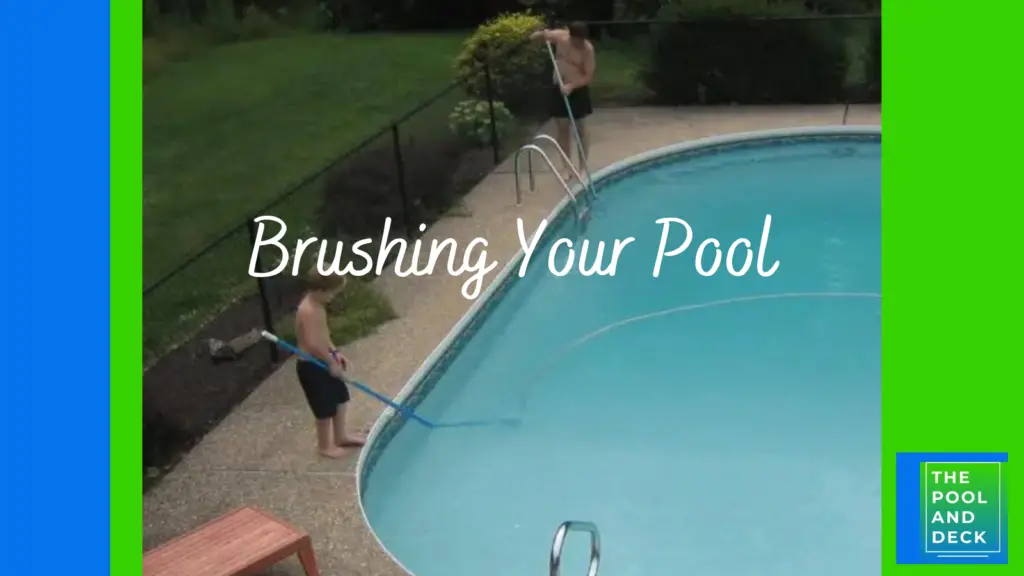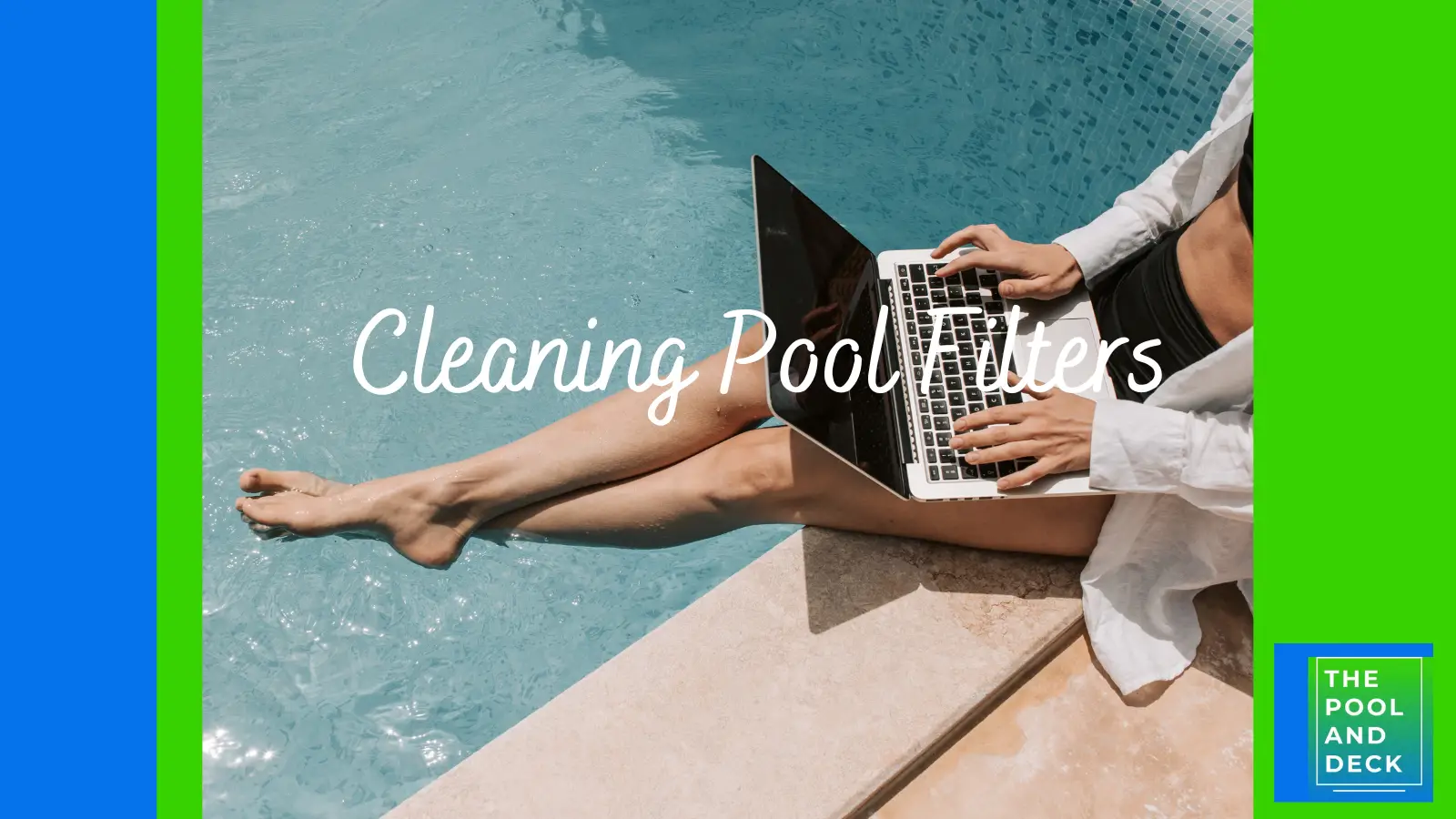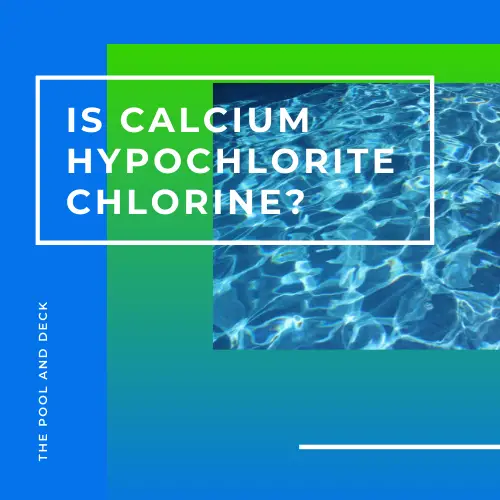How To Brush Your Pool? (The Best Way Explained!)
As an Amazon Associate, I earn from qualifying purchases.

Is your pool less inviting than your neighbors’? Is the water murky, with brown or green stains on the sides and bottom? You might be neglecting or incorrectly brushing your pool. So, how do you brush it properly?
Regular and correct brushing keeps your pool healthy, water crystal clear, and saves you money in the long-term.
In spite of all the necessary pool chemicals and an efficient filtration system, algae can still build up on the sides and bottom of your pool.
This post explains the benefits of brushing, when and how often to do it, and provides a step-by-step guide to brushing your pool effectively.
Table of Contents
What Does Brushing The Pool Do?
Your outdoor pool is open to the elements. It also has a fairly large surface area. This means that your pool is always collecting unwanted material from the surroundings. This includes, but is not limited to, dust & dirt, dry leaves, bacteria, small insects etc.
In addition algae, a plant organism, can also grow in the swimming pool. Sometimes the algae growth is so rapid that your pool can turn from blue to green overnight. At the very least, algae will choke up the filtration system and change the water chemistry.
If you are brushing your pool regularly, you will not notice any visible difference. That is because then your pool remains clean at all times.
What Happens If You Don’t Brush Your Pool?
You will start noticing a difference in your pool, if you do not brush your pool regularly.
Ignoring to brush your pool at regular intervals will result in:
1. Scaling at the Waterline of Your Pool
You will start seeing a white deposit on the sides of the pool around the waterline. These are mineral (mainly calcium) deposits. Scaling is a natural process. It is more likely to occur in pools with plaster, ceramic tiles, stone or similar calcium rich materials.
The numbers to watch out for when having your pool water tested are:
- Calcium Hardness (should be between 200 & 400 ppm)
- Water pH Level (should be between 7.4 & 7.6)
- Alkalinity (should be between 80 & 100 ppm)
However, the most important step is brushing the sides of the pool, especially around the waterline, regularly.
The longer the scales sit on the sides, the more stubborn they get.
2. Staining of Sides & Bottom of Your Pool
You may start seeing brown stains on the sides and sometimes even at the bottom of the pool. The stains will be more visible at tile joints or other surface imperfections such as scratches or minor cracks.
The stains are mostly the accumulation of dust & dirt. Oils, from sun tan lotions or other sources, can aggravate the stains. Stains are not as hard as scales. Brushing will remove them with little effort.
But do not wait too long. They look ugly and will become more and more difficult to remove as time passes by.
3. Greening of the Pool Water
The pool liner material such as plaster or even ceramic tiles have micropores. Dust can collect in these micropores and they become fertile ground for algae to grow.
Algae has some similarity to mold as both grow using spores. The spores get airborne and can move to new areas pretty fast. The difference is that algae is a plant and needs sunlight, nutrients and water to grow. Mold on the other hand is a fungus and does not require sunlight.
You now know why algae can grow rapidly in an outdoor swimming pool. Regular brushing of the pool is important to keep the micropores clean and devoid of dirt (nutrient for algae).
4. Not Enough Pool Water Circulation
The pool water gets circulated mainly because of the return jets and the filtration system. For good circulation the return jets should be pointed downwards and away from the skimmer basket to get a whirlpool effect.
Brushing of the pool is not essential for water circulation but it sure helps. By brushing every corner of your pool, you ensure water circulation even in the “dead areas”.
Good water circulation helps in ensuring that the chemicals that you put in your pool are evenly distributed throughout. This is the secret of keeping your pool clean.
How Often Should You Brush Your Pool?
There is no fixed rule or schedule that you need to follow. At the very least you must brush your pool once a week. If you can, try to brush it twice a week. Brushing a standard sized residential pool takes only 10-15 minutes. It is well worth the effort.
If you have a large pool then you could brush two walls on one day and the other two walls the next day. Brush the pool bottom on the third day. You will be doing a bit of brushing each day, but each section will get brushed only twice a week.
There are some occasions when you will need to increase the frequency.
- Increase the frequency to three times a week if you see signs of algae growth
- Always brush after adding the pool chemicals. It will disperse the chemicals throughout
- Brush your pool twice a day for the first fortnight after re-plastering. After that you can follow the standard schedule
- Brush your pool twice a day in case your pool pump is out of order, till it is repaired
How To Brush Your Pool The Right Way?
Brushing your pool may seem like an easy job. It is easy but it will not be effective if you do not follow the right technique.
Here is what you need to do:
- Use a good quality nylon brush and a telescopic handle.
- Brush in gentle, long motions. Apply the cleaning pressure as you push the brush away from you.
- Start by cleaning the waterline all around your pool.
- Next, clean the steps. Make sure to clean the top surface, followed by the side of the step. Begin with the topmost step and go down, step by step. This way the dirt keeps moving down to the pool bottom.
- Now clean the sides. Move your brush at an angle towards the deep end of the pool. Apply pressure as you push down. Bring the brush up gently without any contact with the pool wall.
- Once all the steps and the sides have been cleaned, it is time to clean the floor. Once again apply pressure as you push the brush at an angle towards the deep end and the pool center.
Wait a bit before the return stroke. Anyway the return stroke should be as gentle as possible. Keep the brush above the pool floor and avoid creating a backdraft.
Think of brushing your pool as sweeping the pool. The objective is to gently move the dirt towards the deep end where it can be sucked up by the filtration unit or the pool vacuum.
Check out these brushes on Amazon:
The Wall Whale Classic WW18Res Wall Whale 18″ Swimming Pool Brush, Blue is excellent for the swimming pool walls. Its key features are:
- The tail holds the brush against the wall with more than 10x the force
- Brush with one hand
- Great for routine brushing or tough algae problems
POOLWHALE Pool Step & Corner Brush,180 Degree Rotation Handle Scrub Brush,for Above Ground & Inground Swimming Pools is perfect for pool steps and corners. Its key features are:
- Glides along effortlessly cleaning above ground & inground swimming pools, spas & hot tubs those filthy pool corners, steps, ladders, odd shaped areas
- Handle can be rotated at 180 degree by pressing the red button for convenient use
- Trouble-free and safety EZ clip, 1-1/4 Pole connection tackles hard to reach places(Not included)
- Round finishing at the edges avoid damage to pool liner
- Heavy duty scrub brush is great for cleaning bathroom, kitchen, tiles, garage, bristles are firm enough to stand up after sustained use
The only exception to “brush gently yet firmly” is when you brush after putting the chemicals in the pool water. The brushing at this time should be vigorous to ensure the chemicals get thoroughly dispersed in the pool water.
Thank you very much for reading the post. I do hope you found it informative and helpful.






